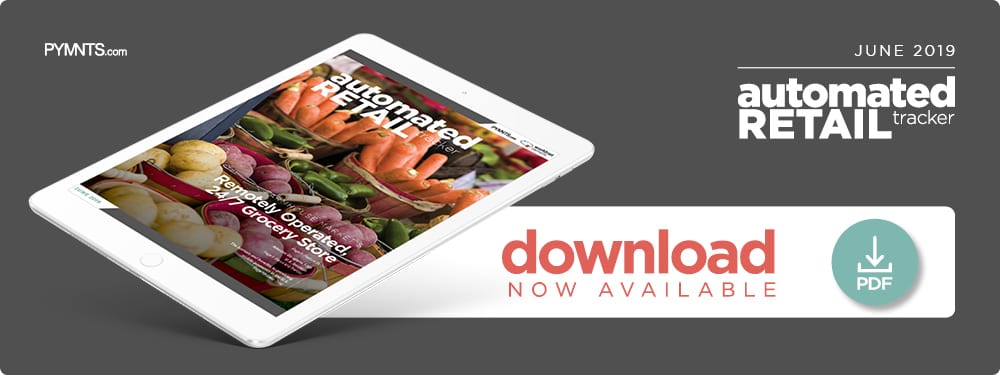Deep Dive: Mobile Payments Uptake In The US
Brick-and-mortar retailers must ensure smoother, easier in-store experiences to compete with the conveniences of eCommerce. There are numerous ways to accomplish this task, including speeding up checkouts, deploying vending machines and offering self-serve or scan-and-go stations.
Retailers must provide convenient payment capabilities as they implement these solutions, though, and the challenges posed by different methods can complicate their efforts. Consumers using cards for purchases often worry about their payment credentials’ security, for example, while cash-only policies can impose cumbersome limits and produce sluggish checkout processes.
Contactless mobile payments offer potential, but the U.S. has seen slow adoption compared to other regions. Between May 2018 and October 2018, more than 79 percent of Chinese smartphone users scanned, tapped, swiped or checked in with their mobile devices at stores’ POS systems to purchase products. That number was about 25 percent for U.S. smartphone users.
Both consumers and merchants in the U.S. have been reluctant to utilize mobile wallets and mobile payments. Many of the former prefer the familiarity of card or cash payments, while the latter are unwilling to implement payment options without seeing strong customer interest. Even so, appreciation for mobile payments is growing. Just 3 percent of restaurants and retailers accepted mobile payments when Apple Pay launched in 2014, but that share rose to about 50 percent by October 2018.
This month’s Deep Dive explores mobile payments’ advantages and obstacles, and how retailers can encourage greater uptake.
Advantages of In-Store Mobile Payments
Cards and cash remain popular payment tools, but these methods can fall short. Cash can limit customers’ purchasing capabilities and easily be easily stolen or lost. Searching through wallets and pockets for the right amount can also prove time-consuming, as can waiting to receive change or smoothing out bills before feeding them into machines. Cards, meanwhile, offer access to more funds and can be deactivated if they are stolen. Still, card users must vigilantly protect their payment credentials and wait at the POS for payments to process.
Near-field communication (NFC) mobile payments may offer advantages in these areas. Each transaction is tokenized to create a unique, single-use account number, meaning bad actors who managed to access such credentials cannot deplete users’ funds. Also, consumers almost always have their smartphones on hand, allowing them to more easily make purchases without carrying extra items. Apps with embedded mobile payments often come with added features, too. A digitally equipped vending or washing machine can alert users that cycles have been completed or warn them of possible malfunctions, for example.
Obstacles to Adoption
Merchants interested in accepting contactless mobile payments must first ensure their POS systems are up to the task. Retailer JCPenney stated via Twitter that it had discontinued Apple Pay acceptance, later clarifying that it could not meet Visa’s deadline to enable the EMV contactless chip capabilities necessary for such payments. Many merchants will also forgo investing in mobile payment capabilities if they do not feel there is significant customer interest.
Retailers must be confident that third-party mobile wallet providers will securely handle customers’ data, as merchants can be held accountable for accepting fraudulent transactions made using consumers’ details. Third-party mobile wallets can also limit retailers’ access to users’ information and insights, and the tokenization approach that secures payment details can keep merchants from knowing which wallet is being used.
These kinds of expenses, risks and limitations may cool merchants on mobile payments until they see consumers’ interest heat up. Customers were still lukewarm on mobile transactions in 2016, with 37 percent of surveyed North American consumers reporting they did not see the value in using such offerings.
Creating Value
While the security, speed and convenience offered by mobile wallets appeal to some consumers, many want to see services that add greater value. Merchants can provide such incentives by embedding mobile payment acceptance into their own apps, tying in loyalty and rewards programs, providing discounts and offering other features.
The success of one such model from Starbucks outshone those of major third-party mobile pay services in 2018. The coffee giant was projected to have more than 23.4 million U.S. mobile payment users that year, compared to Apple Pay’s 22 million, Google Pay’s 11.1 million and Samsung Pay’s 9.9 million.
Retailers like Target and Kohl’s also offer their own mobile wallets, which link barcode- or QR code-based payments to the companies’ branded cards. Retailers may prefer to offer their own wallets because they enable merchants to access customer data, though they would be wise to accept other popular third-party mobile wallets as well.
Merchants must continually innovate as digital conveniences elevate customers’ purchasing experience expectations. Mobile payments may not yet be mainstream in the U.S., but offerings that blend convenience and security with rewards, information alerts or other features could stand out when it comes to winning adoption with customers and merchants alike.
